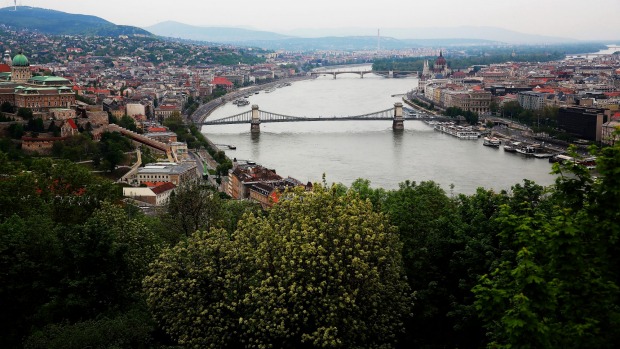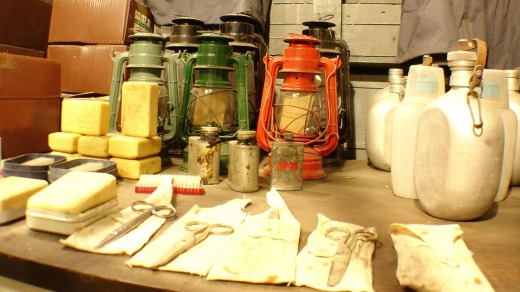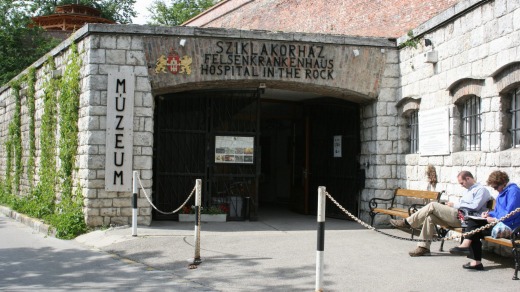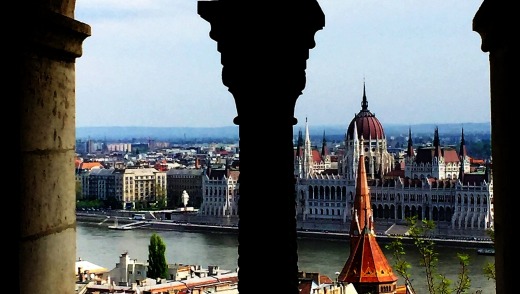
The hills of Buda tumble down into the Danube, that ribbon of water separating it for eternity from its fraternal twin, Pest. From Gellert Hill you can see the two parts of one city spread out: Buda, cloaked in green-tipped lindens and lilacs and horse chestnuts; Pest, stuffed full of beautiful, timeworn antiquities. From Castle Hill you can see the stepping stone that unifies the two: Margaret Island, lodged in the centre of the river, the spot locals come to from all over Budapest for summer picnics.
But burrow beneath the surface of these hills and you will find that they contain within them an unlikely, jarring story: a labyrinth of tunnels and caves that coil through the limestone, stretching on for 10 kilometres. This man-sized rabbit warren was carved out by spring water after the glacial period and has been used by locals ever since the Middle Ages.
As bombs swirled around Budapest in the early 1940s during World War II, officials ordered that the cave system – then used as an air raid alarm control centre and a first-aid post – be converted into a subterranean hospital where patients could be safely treated. It was an inventive solution that provided some measure of relief to the embattled residents of Budapest. Known as the Hospital in the Rock, it boasted state-of-the-art equipment such as X-ray machines and generators, was headed by the chief surgeon at the city's St John's Hospital, and was staffed by volunteers of the Red Cross, many of whom were members of the Hungarian aristocracy.

Babies were born beneath these hills: seven in all, six boys and one girl. But most of the hospital's patients suffered war injuries, for airstrikes had intensified and eventually Budapest was laid siege to by the Soviets. Capacity – initially 60 beds, later increased to 200 – was stretched to bursting: 700 patients were crammed into the labyrinth at the height of the siege, soldiers and civilians, men and women alike. They lay packed sardine-like on the passageway floors, or crowded three or four to a bed, their collective body heat raising the underground temperature to 38 degrees Celsius and causing a breakout of infection that killed more people than did their injuries. Food ran out. Water, too. Bandages were reused. Bodies piled up; they were taken to the surface at night-time, and buried under the cloak of darkness.
Today, more than 1500 artefacts from this period are laid out at the hospital as a poignant reminder of both the resourcefulness and the cruelty of mankind. Wards, operating theatres, even the hospital's tiny kitchen, have been faithfully recreated. Glass syringes and forceps and blood pressure cuffs are displayed alongside bottles of ammonia and rolls of sterile gauze. A soft-bristled scrubbing brush sits on an enamel basin, as though the user has just stepped out of the room and will soon return to scrub his fingernails. Around 200 wax figures – their expressions betraying all too accurately the awfulness of war, their wounds concealed by bloodied bandages – lie on beds and operating tables. Cleansed though this space is after 70 years, one can still hear the cries of the wounded.
Emerging from the bunker, it is difficult to reconcile the loveliness of Budapest in spring – blossoming trees, blue skies, tourists browsing the imposing Buda Castle and Mathias Church with its bright, tessellation of roof tiles – with what lies beneath it. But there is a comforting thought, too, for a city already divided so decisively in two: the hills that spill down into the Danube once crawled with soldiers, while the victims of war lay cocooned within.

www.sziklakorhaz.eu/en
Etihad flies from Sydney to Budapest via Abu Dhabi and Brussels, code-sharing with Brussels Airlines. Return fares start at $2136 excluding taxes. See www.etihad.com/en-au
Scenic's 2016 15 Day Jewels of Europe River Cruise sails from Amsterdam to Budapest via Germany and Austria on one of its next-generation Space-Ships. A visit to Budapest's Hospital in the Rock is one of three excursions guests can select from Scenic's Free Choice options while in Budapest. Prices start at $7295 per person twin share, including free flights to Europe. See www.scenic.com.au
